Home > About Blu > F.A.Q.'s

Frequently Asked Questions
Questions For Blu Rivard
How long have you been in the creative arts?
Since childhood. At one time or another, I've done pencil drawings, pen & ink, charcoal, pastels, acrylic, oils, and even some sculpting and metal work. I explored many art forms--including music (I was also a professional singer/guitarist). I created my first oil painting back in 1981. I've been a professional artist since1986--which means I've made my living from the sale of my work since then.
How long does it take you to paint a painting?
It depends on the complexity of the image, the research necessary, and the size of canvas I'm working on. For example, a 16" x 20" could take three to six weeks; whereas a 24" x 30" or larger image could take anywhere from one to six months or more to complete.
Why did you create more images in some years than others?
There are many factors--some professional, some personal. I put so much into my images that each one really takes on a life of its own. I can't really predict when it will be done--or consequently how many images I can produce in a given year. It varies. Size and subject are certainly key factors. But, there's also research, travel, time off, and the occasional touch of painter's block that impact my yearly output.
How do I know if I'm artistic?
You don't--until you explore what you're capable of. It's about giving yourself permission to unleash your own creative instincts. It's about trying various mediums and materials to see what feels natural to you. Some can sculpt but not paint or draw, others can draw but not paint. Some are able to work in multiple mediums. Take the time to develop a technique that's uniquely your own. Above all, don't give up.
Questions For Rivard Fine Art
What's a medium?
A medium is the category of material in which the artist works. For painters, it may be oil, water color, pen & ink, pastel, acrylic, or colored pencil. It may also be mixed media (such as colored pencil and acrylic combined).
What constitutes an Original?
An Original is the completed first iteration by the artist of a specific image. It's painted only by the artist. No other assistance is used. Any reproductions (limited editions, open editions, posters, etc.) will be created from this image.
Who owns the copyright to an Original?
The artist always retains the copyright to the original image, unless there is a contract or separate written agreement assigning it to the buyer. It is unusual for an artist to assign the copyright to a third party.
What is a Limited Edition?
A Limited Edition is what the name implies--a high-quality reproduction of the Original that's limited to a finite quantity of registered numbers. Once the numbers are sold, it can not be reproduced in that process, form, and size again. The quantity of the edition is decided upon by the artist and the publisher. Accurate records of the numbers of the edition are kept so duplicate numbers cannot not be sold and thereby dilute the investment value of the Limited Edition. A Certificate of Authenticity accompanies each Limited Edition image.
What is a Certificate of Authenticity?
A Certificate of Authenticity is a document that certifies the image or art object was produced from the Original. It defines the number produced in the edition and specifies the actual number you own. For example, if the edition comprises 350 pieces total and you own number one, the certificate would read 1/350. It would also specify the type (such as Artist Proof or Signed & Numbered) and information about the reproduction process used. It provides the value at the time of purchase. This is useful for insurance purposes so that replacement value of a destroyed item can be determined. It should also be evaluated every couple of years by the publisher (in most cases this will be by Rivard Fine Art). A replacement or updated Certificate of Authenticity for insurance updates or a new owner who has acquired the image can be purchased from Rivard Fine Art for $15.00 USD.
What is an Artist's Proof Limited Edition?
An Artist's Proof is a very limited portion of a limited edition. The artist personally signs and numbers the image and may also include a remarque (original art typically added on the margin of the Artist's Proof).
What is a Signed & Numbered Limited Edition?
The balance of the Limited Edition (apart from the Artist's Proofs) comprises images that the artist has signed and numbered.
What is an Open Edition?
An Open Edition is a reproduction of an original image that is not limited in quantity. It is always of a different size or medium than any limited edition that may have been produced from the Original. They are neither signed nor numbered. The artist may choose to sign an Open Edition image as a courtesy at an exhibition or special event, however.
What is a Giclee?
Giclees are reproductions created via a state-of-the-art digital scanning/printing process. The high-rez image is highly stable and can be reproduced on canvas, paper, metal, or other materials. Rivard Fine Art publishes its Limited Editions and Open Editions as Giclees.
What is a Serigraph?
Before the advent of the Giclee process, Limited Editions were created by the time consuming and labor intensive Serigraphy method. Layer upon layer of pigment is added in a silk-screen process to create the finished image. Certain Blu Rivard Limited Editions are available as mixed-media Serigraphs.
What is the Wooden Gallery Process?
The Wooden Gallery Process is unique and unlike any other framed image. The image is mounted on a hard board and a patented emulsion with UV protection is spread over the surface to protect the image from sun damage in bright sun-lit rooms. This helps protect your investment. Glass is not required and many framing/matting options are possible.

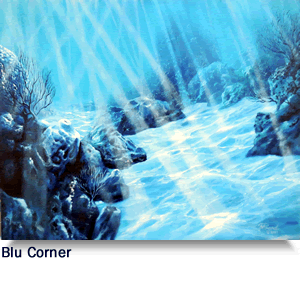
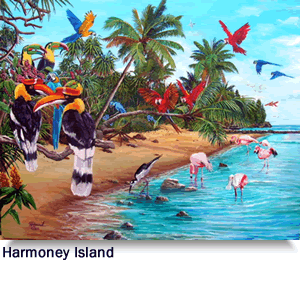
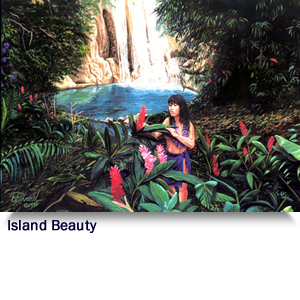
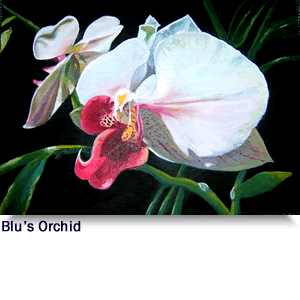
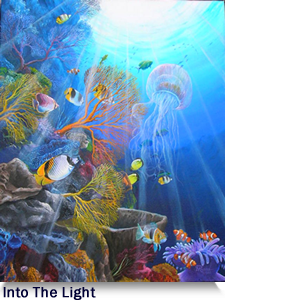
Connect With Us